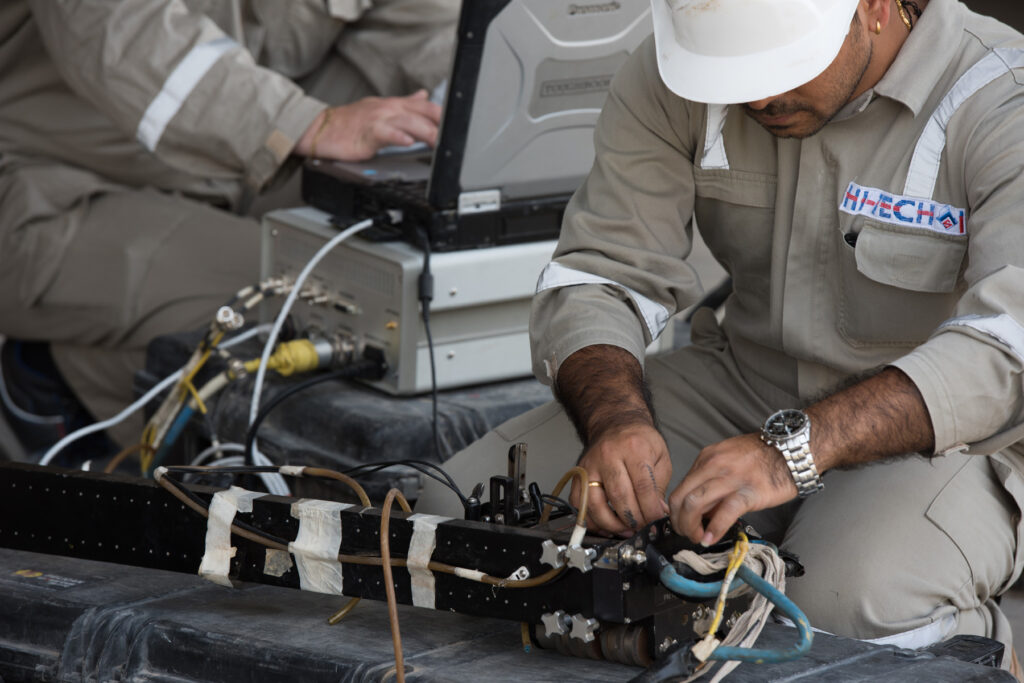Auto UT (Pipe Wizard) –Automated Ultrasonic Inspection For Pipeline Girth Welds
Pipelines Perform A Critical Function In The Global Economy, Transporting Huge Volumes Of Gas, Oil, Water, And Other Chemicals. Pipes Are Girth-Welded On-Site, Typically Using Automated Welding Systems. For Construction Of Pipelines, Welds Are The “Weak Spot” As This Is Where Defects Tend To Occur. Welds Are Nondestructively Tested, Coated, And Buried Or Laid On The Sea Bed. Due To The Demanding Construction Cycle, It Is Important That Weld Defects Be Detected And Analyzed Very Quickly.
In The Last Several Years, Automated Ultrasonic Testing (AUT) Has Begun Overtaking Traditional Radiography As The Pipeline Weld Inspection Method Of Choice Throughout The World.
Our Pipe WIZARD Is An Automated Girth Weld Inspection System Using Phased Array And Conventional UT Techniques (AUT). Specially Designed For In-Site Weld-To-Weld Inspection In Extreme Environments, On-Shore And Off-Shore.
Pipe WIZARD Fits All Configurations Of Circumferential Welds:
• Any Type Of Weld Profiles: CRC-Evans, J-Bevel, V-Bevel, Double V, X, Etc.
• Typical Pipe Wall Thickness: From 6 Mm (0.25 In.) To More Than 35 Mm (1.4 In.) Options Are Available For Thicker Pipes
• Typical Pipe Diameter: From 6 In. To More Than 56 In.
Options Are Available For Smaller Diameters
• Pipe Material: From Standard Carbon-Steel To More Complex Configurations Like Inconel, Cladded Pipe, Seamless Pipes With Wall-Thickness Variation, Etc.
Typical Detected Defects Are Lack Of Fusion, Incomplete Penetration, Porosity, Burn Through, Undercut, Hi-Low, Crack, Cold Lap, Inclusion, Etc.
The Inspection Cycle Time Is Between 2 Min And 6 Min Depending On The Type Of Weld, Pipe Diameter, Location, And Environment.
Advantages Of AUT
• No Radiation Hazard, No Chemicals, No Licensing
• Very Short Inspection Cycle Time For High Production Rate
• Better Detection And Sizing Accuracy, Leading To Lower Rejection Rate
• Use Of Engineering Critical Assessment (ECA) Acceptance Criteria With Measurement Of Vertical Height And Depth Of Indications, Reducing Rejection Rate
• Real-Time Analysis From Smart Output Display
• Data And Inspection Reports On Electronic Support
• Better Control Of Welding Process, Also Giving Lower Rejection Rate

